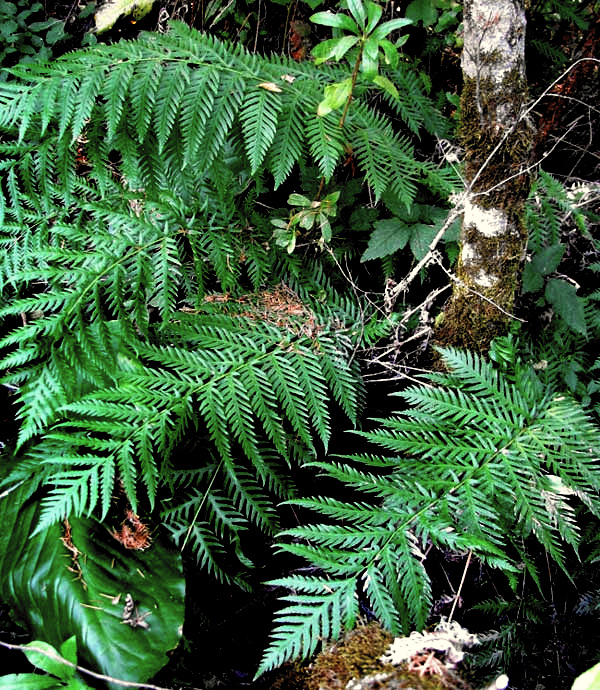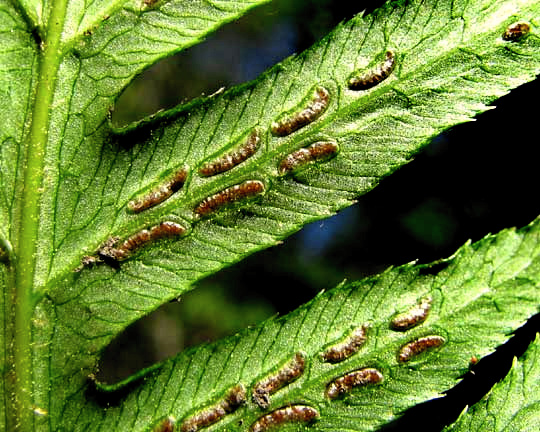Excerpts from Jim Conrad's
Naturalist Newsletter

from the September 27, 2009 Newsletter, issued from the Siskiyou Mountains west of Grants Pass, Oregon:
CHAIN FERN
Walking home from my valley hike I noticed a thicket of horsetails, genus Equisetum, in the bottom of a roadside ditch. I figured that there must be a spring there, for horsetails need water, and if there was a spring, maybe I could find organisms there not found in my usual upland haunts. I plunged into a shadowy, stickery tangle of vines, bushes and tree trunks, mud sucking at my hiking boots, and almost instantly was rewarded with the ferny sight shown above.
I've mentioned how in this area we have abundant ferns, but low fern diversity -- endless repetitions of Bracken and two look-alike species of swordfern. But here was a fern species I'd not seen here until now, a frilly, pretty, robust one with six-ft-long fronds, clearly a species that just doesn't show up if it can't have mud to root in.
Flipping a big frond I was gratified to see numerous spore-producing fruiting bodies, or sori -- unusual ones -- ornamenting the undersurface, as shown below:

The average fern sorus is round or almost round, or long and placed side-by-side, so those frankfurter-shaped ones end-to-in on both sides of the pinna mid-vein are remarkable. They're also wonderful field marks, for I can't think of another fern genus with sori like them. This is the Giant Chain Fern (the sori are "chained" end-to-end), WOODWARDIA FIMBRIATA. Other Chain-Fern species occur in Eastern North America but the Giant is distributed only from British Columbia south through the westernmost states into northwestern Mexico.
This is such a large (to 9 feet, 2.7m), luxuriantly growing fern that it's marketed in many nurseries as perfect for shady, woodland walks and even locations in full sun, wherever it can have its roots in mud. "I imagine it would look like an ancient forest where dinosaurs roamed," one savvy salesman suggests, and that's about right. It doesn't tolerate severe freezes, however.
The stalks are so stout that they were used by Native Americans for making baskets.